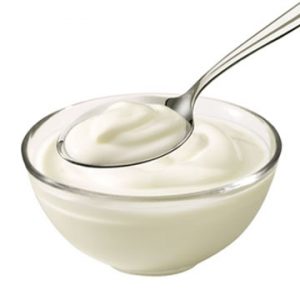Dosage
Probiotic doses are typically standardized in terms of the amount of living bacteria per unit of volume (dose). Each living bacterium is referred to as a colony forming unit (CFU).
The dosage of probiotic foods and supplements is based solely upon the number of live organisms present in the product. Successful results have been attained in clinical trials using between 107–1011 CFU/day.[1, 2]
The minimum concentration of probiotic bacteria needed to achieve therapeutic effects appears to be strain dependent, in that for some strains (e.g., Lactobacillus reuteri Protectis) 107 CFU is a sufficient quantity to produce beneficial effects[1], whereas for other strains, 109 CFU is needed (e.g., Lactobacillus rhamnosus GG)[3]. This situation, unfortunately, makes it hard to give firm dosage recommendations, as the minimum effective dosage differs by strain.
Given the minimum dose for some strains is 109 CFU/day, it is best practice to ensure that supplements contain bacteria in concentrations >109 CFU/dose, unless research has demonstrated that the specific strain contained in the supplement is effective in smaller amounts. If a product contains multiple strains, then each strain should be present at levels of >109 to ensure effectiveness.
Dosing Tips
Supplements are best consumed with/after meals in order to take advantage of the increased alkalinity of the stomach environment – which equates to greater bacterial survival.
Medicinal Yoghurt Dosing
Research suggests that 100 times less viable bacteria can be given in a dairy medium than in freeze-dried supplements to achieve similar numbers of live organisms in the lower bowel.[4] Dairy appears to work as an ideal transport medium for bacteria, enhancing their survival through the stomach and small intestine.[5]
 The minimum dosage of viable bacteria needed in a dairy medium is 108 CFU/dose.[6] Medicinal, or therapeutic yoghurts contain >106 CFU per mL; thus a 100g serve (~1/2 cup) will provide sufficient probiotic bacteria for therapeutic effects.[7]
The minimum dosage of viable bacteria needed in a dairy medium is 108 CFU/dose.[6] Medicinal, or therapeutic yoghurts contain >106 CFU per mL; thus a 100g serve (~1/2 cup) will provide sufficient probiotic bacteria for therapeutic effects.[7]
Unfortunately, many commercially available so-called “acidophilus” and/or “bifidus” yoghurts fail to meet this minimum level.[8] Only yoghurt brands that are guaranteed to contain this level of viable bacteria, those that have done so in independent market-basket surveys, or those that have clinical trials demonstrating efficacy should be relied upon for therapeutic purposes. A serve of yoghurt containing less than 108 CFU of each probiotic strain is unlikely to have any medicinal effects beyond its inherent nutritional content.[9]
1. Shornikova, A.V., et al., Bacteriotherapy with Lactobacillus reuteri in rotavirus gastroenteritis. Pediatr Infect Dis, 1997. 16: p. 1103-1107.
2. Gionchetti, P., et al., High-dose probiotics for the treatment of active pouchitis. Dis Colon Rectum, 2007. 50: p. 2075-2082.
3. Saxelin, M., Colonization of the human gastrointestinal tract by probiotic bacteria ( Lactobacillus GG). Nutrition Today, 1996. 31: p. 5S-9S.
4. Saxelin, M., Colonization of the human gastrointestinal tract by probiotic bacteria. Nutrition Today, 1996. 31: p. 5S-9S.
5. Kailasapathy, K. and J. Chin, Survival and therapeutic potential of probiotic organisms with reference to Lactobacillus acidophilus and Bifidobacterium spp. Immunology and Cell Biology, 2000. 78: p. 80-88.
6. Hawrelak, J.A., Probiotics: Are supplements really better than yoghurt? Journal of the Australian Traditional-Medicine Society, 2002. 8(1): p. 11-23.
7. Lourens-Hattingh, A. and B.C. Viljoen, Yogurt as a probiotic carrier food. International Dairy Journal, 2001. 11: p. 1-17.
8. Rybka, S. and G.H. Fleet, Populations of Lactobacillus delbrueckii ssp. bulgaricus, Streptococcus thermophilus, Lactobacillus acidophilus and Bifidobacterium species in Australian yoghurts. Food Australia, 1997. 49(10): p. 471-475.
9. Hawrelak, J.A., Probiotics, in Textbook of Natural Medicine, J. Pizzorno and M. Murray, Editors. 2013, Elsevier: St Louis. p. 979-994.
